Which of the following are functions of the MPLS control plane in a router? (Choose two)
Which of the following statements best describes downstream unsolicited label distribution?
Click on the exhibit button below.
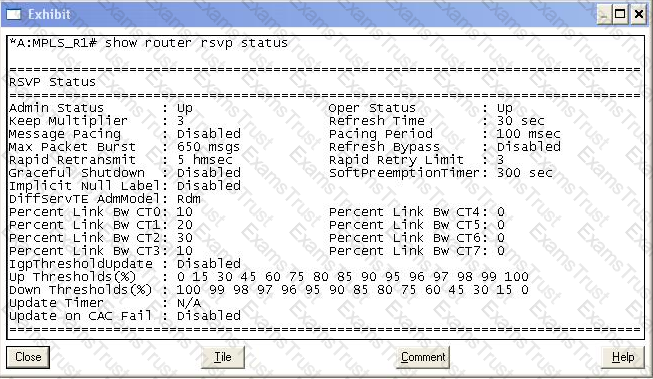
Given the configuration shown, how much of a link's 100Mbps reservable bandwidth can an LSP access when configured for class-type 0 and priority 1?
Which of the following statements regarding RSVP-TE is FALSE?
Which of the following statements best describe MPLS fast reroute characteristics? (Choose two)
Click on the exhibit button below.
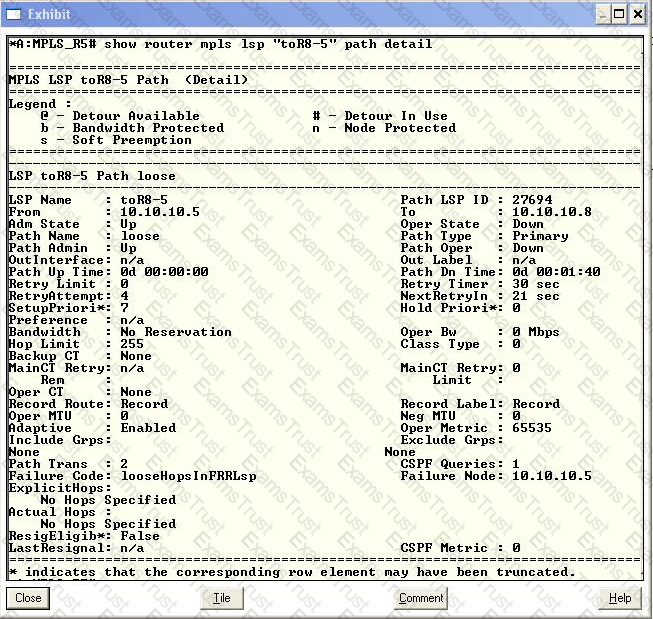
LSP "toR8-5" requests fast reroute protection on the primary loose path. What could be done to remove the Failure Code shown?
Click on the exhibit button below.
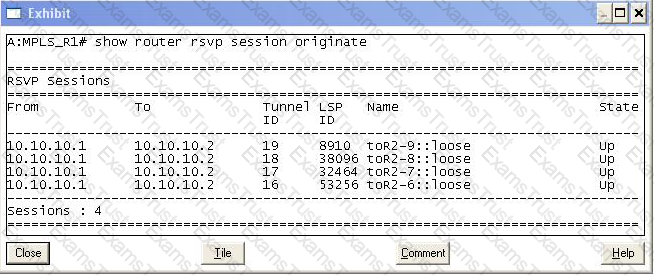
Which fields in this output uniquely identify the RSVP session belonging to a single LSP? (Choose three)
Which of the following are characteristics of an LSP? (Choose two)
Click on the exhibit button below.
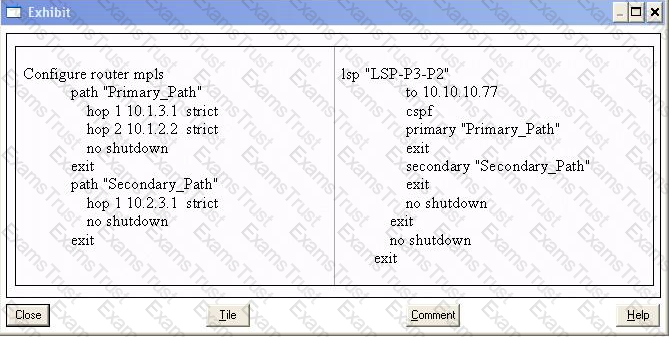
Given the configuration below, which of the following scenarios is FALSE?
You wish to advertise LDP labels for all local networks; which is the most effective policy statement to use?
Which of the following describes what happens when facility backup fast reroute is enabled for a LSP? Choose three answers.
Which of the following statements regarding per-platform label space are true? Choose two answers.
Which of the following about RSVP-TE is TRUE?
What action does a router perform when it looks up the label of an incoming packet in its LFIB and sees that the LFIB maps to an egress label of 3?
Click on the exhibit button below.
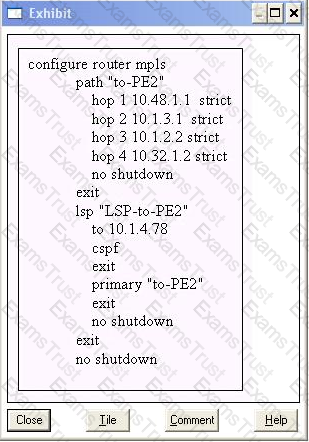
Given the configuration below, which of the following commands would enable fast reroute on the LSP? Choose two answers
Which of the following are the default settings for the Alcatel-Lucent 7750 SR when using LDP?
Which LSA is used for OSPF-TE purposes?
How does MPLS-TE overcome the issue of IP hyper-aggregation?
Click on the exhibit button below.
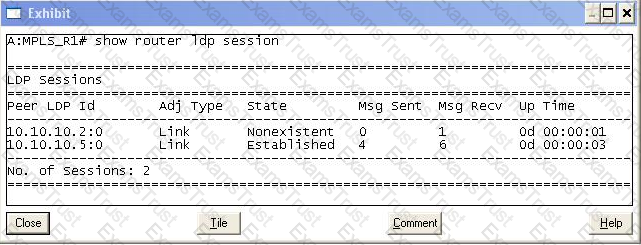
Under which condition might the peer LDP ID 10.10.10.2:0 entry show state "Nonexistent"?
Which of the following is described by the following statement? An LSR propagates a label mapping only for an FEC for which it has a label mapping for the FEC next-hop.
Click on the exhibit.
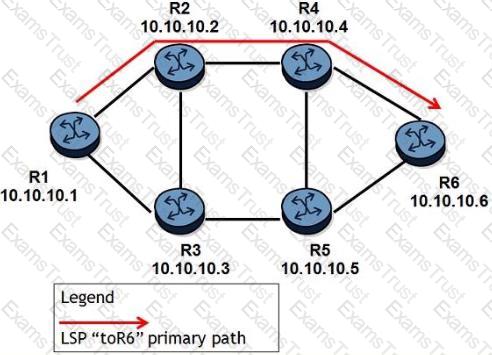
Which of the following CANNOT be used to ensure the LSP toR6" will follow the path R1-R2-R4-R6?
Which of the following about Fast Reroute node protection tunnels is FALSE?
Which of the following regarding the MPLS SWAP label operation is TRUE?
Click on the exhibit.
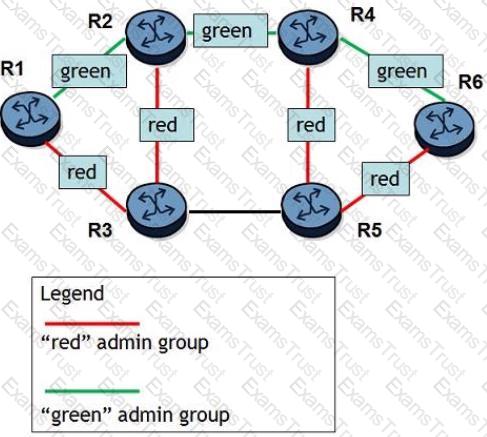
All links are of equal cost. A CSPF-enabled LSP is configured on R1 to R6. Its fully loose primary path is configured with an "include green" statement and the fully loose secondary path is configured with an "include red" statement.
Which paths will be taken by this LSP?
Which of the following is NOT required to configure an Alcatel-Lucent 7750 SR as a PE router running 6PE?
Click on the exhibit.
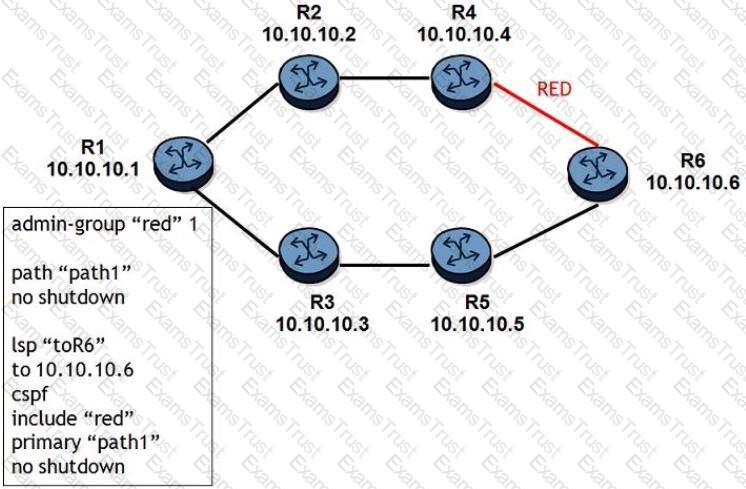
The link between routers R4 and R6 are configured with an admin group "red". What happens when the LSP is first signaled?
Which of the following is NOT an advantage of RSVP-TE compared to LDP?
Click on the exhibit.
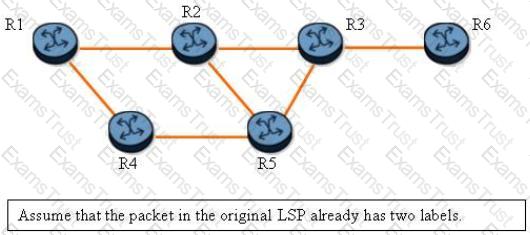
An LSP traverses R1-R2-R3-R6 and one-to-one fast reroute is enabled. If the protected LSP transports two labels, and router R2 has failed, how many labels will be on the detour path?
Which of the following about LDP-over-RSVP is TRUE?
Click on the exhibit.
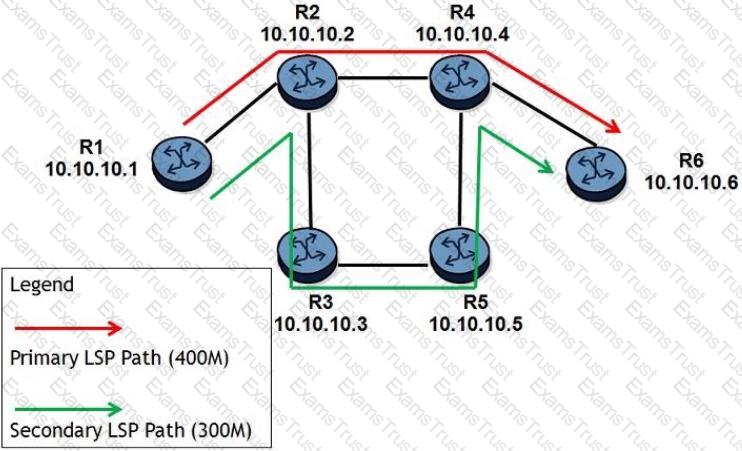
All links have 1Gbps unreserved bandwidth initially and Shared Explicit reservation style is used. After the LSP's primary and standby secondary paths are signaled, how much unreserved bandwidth is left on the links?
What are the default settings for RSVP-TE on the Alcatel-Lucent 7750 SR?
Which of the following about RSVP-TE is FALSE?
Which of the following regarding per-platform label space is TRUE?
Click on the exhibit.

After the Isp-ping command is executed, which of the following best describe the router's action?
Which of the following is NOT an application of MPLS?
Which of the following regarding label population is TRUE?
Which of the following best describes downstream on demand label distribution?